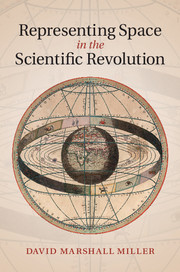Representing Space in the Scientific Revolution
Langue : Anglais
Auteur : Miller David Marshall

Using an integrated philosophical and historical approach, this book explores the fundamental shift in understandings of space in the scientific revolution.
The novel understanding of the physical world that characterized the Scientific Revolution depended on a fundamental shift in the way its protagonists understood and described space. At the beginning of the seventeenth century, spatial phenomena were described in relation to a presupposed central point; by its end, space had become a centerless void in which phenomena could only be described by reference to arbitrary orientations. David Marshall Miller examines both the historical and philosophical aspects of this far-reaching development, including the rejection of the idea of heavenly spheres, the advent of rectilinear inertia, and the theoretical contributions of Copernicus, Gilbert, Kepler, Galileo, Descartes, and Newton. His rich study shows clearly how the centered Aristotelian cosmos became the oriented Newtonian universe, and will be of great interest to students and scholars of the history and philosophy of science.
List of figures; Preface; Note on texts; 1. Introduction: centers and orientations; 2. Pluribus ergo existentibus centris: explanations, descriptions, and Copernicus; 3. Non est motus omnino: Gilbert, verticity, and the Law of the Whole; 4. Respicere sinus: Kepler, oriented Space, and the ellipse; 5. Mille movimenti circolari: from Impetus to conserved curvilinear motion in Galileo; 6. Directions sont entre elles paralleles: Descartes and his critics on oriented space and the parallelogram rule; 7. Incline it to verge: Newton's spatial synthesis; 8. Conclusion: methodological morals; References; Index.
David Marshall Miller is Assistant Professor of Philosophy at Iowa State University. He has published articles in journals including Philosophy of Science and History of Science.
Date de parution : 08-2014
Ouvrage de 246 p.
16x23.4 cm
Date de parution : 09-2016
Ouvrage de 250 p.
15.2x22.8 cm
Thème de Representing Space in the Scientific Revolution :
© 2024 LAVOISIER S.A.S.



